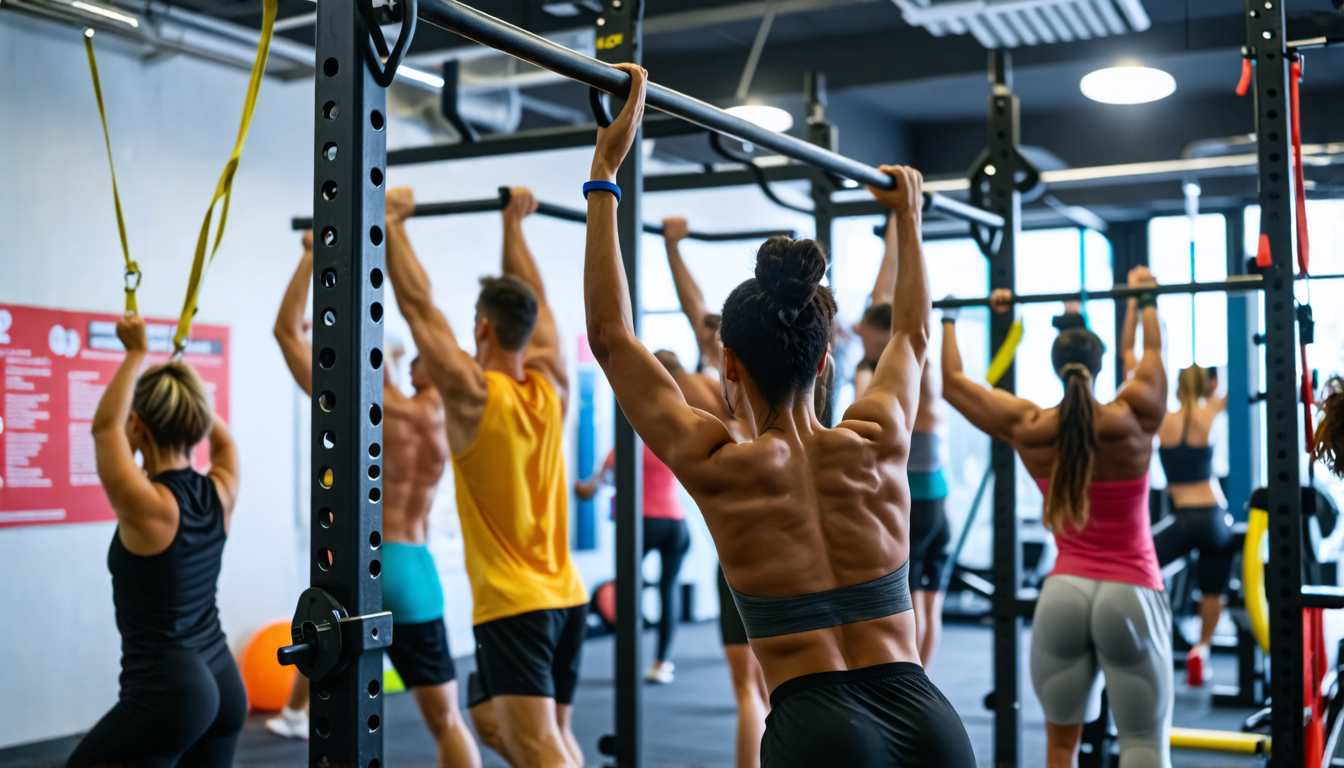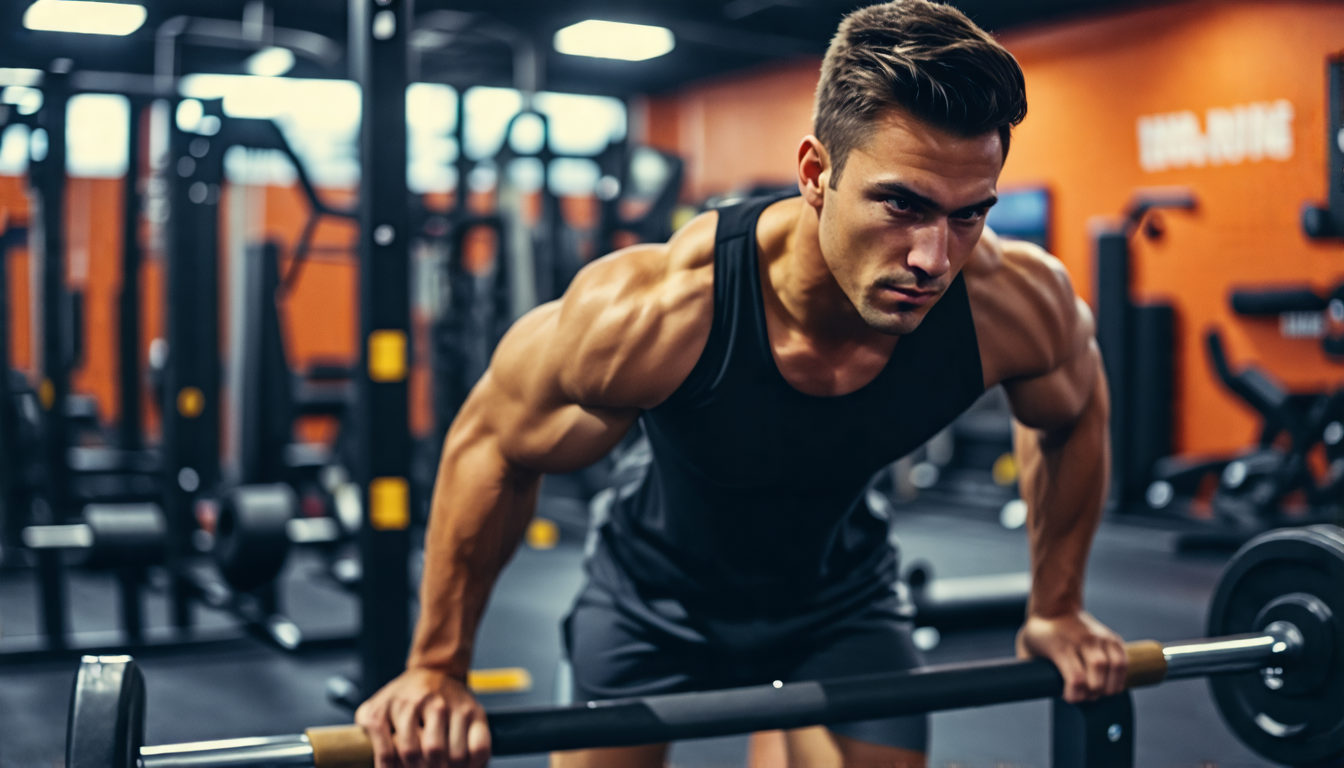When it comes to building a robust and defined chest, fitness bar exercises stand out as a vital component of any home gym routine. Whether you’re outfitting a dedicated workout space in your apartment or making the most of limited square footage, a versatile home fitness bar serves as an essential tool for sculpting your upper body. The convenience of having a fitness bar at home means you can easily integrate effective exercises like the standard bench press, incline bench press, and dynamic push-ups, utilizing parallel bars right in your living room or garage.
These exercises are not only integral for chest muscle growth but also foster an overall increase in upper body strength. To maximize the benefits and minimize the risk of injury, taking the time to focus on proper form and technique is crucial. Incorporating fitness bar exercises into your home workout routine offers numerous benefits, such as improved muscle definition and endurance. Moreover, it allows for a variety of adjustments and variations, accommodating different fitness levels. Whether you’re just starting or looking to push past a plateau, exploring negative rep techniques and altering tempo can add an extra layer of challenge to your regimen, ensuring continued progression and results. With the right fitness bar and commitment, building a stronger chest from the comfort of your home is both achievable and rewarding.
Top Fitness Bar Exercises for Effective Chest Muscle Growth
Maximizing chest muscle growth requires a well-structured workout plan that effectively targets the pectoral muscles. Among the numerous exercises available, certain fitness bar exercises stand out for their efficacy in building and defining the chest. These exercises not only hone the chest but also significantly contribute to overall upper body strength, providing an all-encompassing workout regimen perfect for home fitness enthusiasts. Incorporating these into a home fitness bar routine can ensure a strong, sculpted chest.
Standard Bench Press
The standard bench press is often hailed as the king of chest exercises, utilizing a fitness bar to engage primarily the pectoral muscles, triceps, and deltoids. Performing this exercise correctly is crucial for achieving optimal muscle activation and minimizing the risk of injury. When done properly, it serves as a cornerstone for any effective chest routine.
To execute the standard bench press, lie flat on a bench with feet planted firmly on the ground. Grip the fitness bar with hands spaced slightly wider than shoulder-width apart. Lower the bar slowly to the middle of your chest, keeping elbows at about a 45-degree angle to your body, then press the bar back up to the starting position, fully extending your arms. This movement emphasizes the lower and middle parts of the chest, creating a solid foundation of muscle mass.
Form and technique are pivotal; ensure that you maintain control throughout the motion to prevent unnecessary strain.
Incline Bench Press
The incline bench press shifts the focus to the upper region of the chest. By adjusting the bench to a 15 to 30-degree angle, you engage the clavicular head of the pectoral muscle, which helps in building a fuller, more rounded chest appearance. This variation should be included in any home fitness program as a complement to the standard bench press.
For proper form, set the bench at an incline, grasp the fitness bar with hands at shoulder width, and lower it carefully until it nearly touches your upper chest. Press the bar back up, extending your arms without locking your elbows. This controlled motion not only targets the upper chest but also challenges the stabilizing muscles, promoting overall strength and endurance.
Push-Ups Using Parallel Bars
Push-ups are a versatile and highly effective exercise for chest development, and incorporating parallel bars takes this exercise to the next level. This variation introduces an increased range of motion, allowing deeper engagement of the chest muscles, as well as the triceps and shoulders.
Position yourself between two parallel bars, gripping each bar with your hands. Lower your body until your chest almost reaches the level of the bars, then push your body back up. This movement emphasizes chest muscle engagement and increases muscle fiber recruitment due to the deeper dip achieved.
The great benefit of parallel bar push-ups in a home fitness bar setup is the minimal equipment needed, making them perfect for those building a home gym environment. This exercise not only reinforces chest development but also enhances overall body balance and stamina.
The Importance of Form and Technique
Regardless of the specific fitness bar exercise chosen, maintaining correct form is non-negotiable for safety and effectiveness. Proper technique maximizes results while minimizing the risk of injury, a crucial consideration especially for home fitness enthusiasts without on-hand professional supervision.
Before starting any new exercise routine, it’s recommended to focus on mastering the basic techniques. Start with lighter weights to perfect form before progressing to heavier loads. This approach will build a solid foundation of strength while ensuring that exercise execution remains smooth and controlled.
Breathing techniques are also integral to performance; exhale during the exertion phase and inhale during the relaxation phase to maintain steady oxygen flow and support muscle endurance.
In summary, effective chest muscle growth at home can be achieved with fitness bar exercises such as the standard bench press, incline bench press, and push-ups using parallel bars. By prioritizing proper form and technique, you not only enhance your workout efficiency but also pave way for formidable strength gains and muscle development, all from the comfort of your home gym.

Incorporating fitness bar exercises into your workout routine offers numerous benefits for building a stronger and more defined chest. Not only do these exercises enhance your chest muscle definition, but they also contribute to overall upper body strength, making them an essential part of any fitness regimen. Home fitness bars, particularly, offer a convenient setup that allows individuals to perform these exercises without the need for a commercial gym.
Key Benefits of Fitness Bar Exercises for Chest Muscle Development
Using fitness bars for chest exercises is particularly advantageous due to the compound nature of these movements. By engaging multiple muscle groups simultaneously, you can efficiently work on muscle symmetry and coordination. Regularly performing these exercises helps in targeting the pectoral muscles, deltoids, triceps, and even the core, adding to a well-rounded upper body strength.
Another significant benefit is the improvement in muscle endurance and flexibility. As you perform various fitness bar exercises, your muscles adapt and become more resistant to fatigue. This endurance allows you to handle more intense workouts over time, crucial for muscle growth and definition.
Variations and Modifications for Different Fitness Levels
Fitness bar exercises can be modified to suit individuals with varying levels of strength and experience. For beginners, starting with basic movements such as push-ups using parallel bars is recommended. This exercise involves pushing your body up and down using the bars, emphasizing the chest muscles while providing support through your legs for balance.
Intermediate and advanced users can focus on more challenging variations such as the incline bench press and the decline bench press. For the inclined bench press, adjust the bench to a 30 to 45-degree angle, which emphasizes the upper chest muscles and shoulders. Alternatively, the decline bench press targets the lower part of the chest.
Negative Rep Techniques and Tempo Variations
Integrating negative repetitions into your workout can significantly intensify your fitness bar exercises. Negative reps involve emphasizing muscle tension during the lowering phase of an exercise, effectively increasing muscle fiber recruitment. For instance, when performing a bench press, take three to five seconds to lower the bar, then push it up with a normal pace. This variation tests your muscle endurance and contributes to hypertrophy.
Tempo variations are another excellent way to shock the muscles and further enhance chest development. By altering the speed of the movement, you can focus more on muscle control and time under tension. For example, perform the push-up with a slow descent, hold briefly at the bottom position, and push back with an explosive movement. This variation keeps the muscles engaged throughout the exercise.
Incorporating Fitness Bar Exercises with Home Gym Equipment
For those optimizing their training from home, a fitness bar setup is a versatile and space-saving solution. Home fitness bars come in various forms, including wall-mounted pull-up bars, dip stations, or adjustable weight benches equipped with barbell supports. Such equipment allows users to perform a wide range of chest muscle exercises efficiently at home.
Moreover, incorporating resistance bands or weighted vests can add resistance and variability to your workout, pushing your muscles to adapt and grow stronger. Using these tools in conjunction with fitness bar exercises means your chest workouts remain challenging and effective regardless of your current strength level or fitness goals.
Ultimately, fitness bar exercises are a foundational component for those aiming to improve their chest muscle definition and overall upper body strength. By understanding the benefits, incorporating variations suitable for your fitness level, and utilizing home equipment intelligently, you can ensure a robust and effective chest workout regimen.
In conclusion, fitness bar exercises present a highly effective means of targeting chest muscles for growth and strength. By incorporating exercises such as the standard bench press, incline bench press, and push-ups on parallel bars into your routine, you can engage the chest muscles intensely while also working on upper body strength. It is crucial to focus on maintaining proper form and technique throughout these exercises to maximize gains and minimize injury risk. The benefits of these exercises extend beyond muscle definition to include overall improvements in stamina and functional strength.
Introducing variations and modifications to standard fitness bar exercises can cater to different fitness levels, providing both beginners and seasoned athletes with opportunities to further challenge their chest muscles. Techniques such as negative reps and tempo changes can enhance the workout by increasing time under tension, which stimulates muscle growth.
For those utilizing a home fitness bar setup, these exercises offer a versatile and effective workout option, enabling a comprehensive chest workout without the necessity of excessive equipment. With dedication and consistency in performing these exercises, individuals can expect significant improvements in their chest muscle strength and definition, contributing positively to their overall fitness journey.

